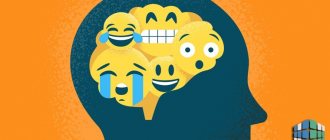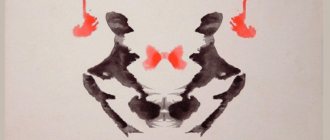Consultation via Skype or WhatsApp is available.
For a more objective diagnosis of mental disorders and diseases, we use a special set of neurophysiological techniques under the general name neurophysiological test system . This approach allows us to select optimal treatment methods for each patient and monitor the effectiveness of the therapy used at all stages of treatment.
Neurophysiological test system allows identifying mental pathologies in a patient at the genetic level. Interpreted data helps the neurophysiologist obtain the most complete understanding of the individual characteristics of the patient’s mental state. The tests included in this technique identify individual “weak points” in patients—certain biological markers that, at the genetic level, determine a given person’s predisposition to a particular mental disorder.
The main methods of the neurophysiological test system are:
- antisaccade test,
- pre-stimulus inhibition of SR (startle reflex),
- technique of inhibition of the evoked P50 wave.
The use of neurophysiological techniques increases the accuracy of diagnosing the patient’s condition at each stage of therapy and allows for clear control of the progress of treatment.
Antisaccade test
Eye movement analysis makes it possible to diagnose a range of mental disorders and diseases. Eye movements can be of different types:
- saccades are rapid movements of the eyes from one point to another,
- prosaccades are saccades in the direction of the target,
- antisaccades are saccades in the opposite direction to saccades.
The duration of antisaccades is longer than that of prosaccades. In patients with schizophrenia, a special antisaccade test is used to analyze eye movements. This study is being conducted to identify frontal dysfunction, as well as to detect genetic disorders and study the neuroanatomical and neurophysiological mechanisms of mental illness.
The antisaccade test is carried out in a darkened room and takes no more than one hour. A person is placed in a chair and a monitor is installed in front of him, on which certain visual images are reproduced - targets. The test is carried out using special electroencephalography (EEG) techniques. The patient watches the images on the monitor, while the equipment tracks his eye movements and records an EEG graph. After this, the test results are analyzed: eye movements during the testing process are analyzed and the overall activity of the cerebral cortex is analyzed at the time of preparation of the anti-cascade. The total test results allow the neurophysiologist to most accurately diagnose the physiological state of the patient’s frontal cortex and identify pathologies that are the cause of mental disorder.
Method of inhibition of the evoked P50 wave
During testing, the patient sits in a chair with headphones on, his eyes open. Special sound signals (clicks) are sent from the computer to the headphones, which occur in pairs and are repeated with a certain frequency. The interval between signals is selected randomly and ranges from 15 to 22 seconds. The patient listens to these signals, and at this time the equipment records his EEG. When analyzing the EEG results, the patient's reaction to the heard signals is revealed and the inhibition (delay) of this reaction is determined.
This study consists of two series of stimuli, each series containing 50 pairs of sound signals. Processing the results of such testing allows a neurophysiologist to determine the effectiveness of a certain brain function - the so-called sensory filtering system. If the sensory filtering system in the brain does not work effectively enough, this indicates the presence of pathologies of the schizophrenia spectrum.
P300 evoked wave technique
To test using the P300 evoked wave technique, a person is seated in a chair and headphones are placed on him. The total testing time takes approximately 45 minutes. The patient, with his eyes closed, listens to repeated sound signals with a volume of 75 dB and a duration of 50 ms, which are received through headphones. In this case, 80% of the signals are insignificant for the patient’s hearing (their pitch is 1000 Hz), and the remaining 20% are significant (their pitch is 2000 Hz). In response to significant signals, the patient must press a key on the device, and his EEG is recorded.
At the end of the test, the neurophysiologist analyzes the results. In patients with schizophrenia, the P300 component is characterized by reduced amplitude and increased reaction speed (latency) to presented sound signals. The P300 evoked wave technique allows the specialist to identify areas of the patient’s cerebral cortex in which the functional state is below normal.
Instructions
Now we will put dots in the squares. Let's start with the very first square. From now on we will move exclusively clockwise. Each transition from one square to another is carried out without interrupting work and only at the command of the experimenter. During the entire time allocated for marking dots, work at your maximum rhythm. Each square will be given 5 seconds, during which it is necessary to place the maximum possible number of dots.
So, the experimenter gives the signal “Start”, then every 5 seconds he gives a new signal “Move to another square”, after 5 seconds of putting dots in the 6th square the experimenter gives the last signal “Stop”. All clear? Okay, then take a pencil in your right/left hand and fix it in front of the first square.
Keys to tapping test:
In order to process the results of the tapping test, first of all it is necessary to count the resulting number of points in each square. Next, you should build a graph of the subject’s performance in accordance with the results obtained; for this, 5-second time intervals should be plotted on the abscissa axis, and the calculated number of points in each square should be plotted on the ordinate axis.
Method of pre-stimulus inhibition of the startle reflex
In neurophysiology, the innate human reaction to an unexpected loud sound (startle) is called the startle reflex. In serious mental disorders, even in the earliest stages, this reaction is disrupted. Changes in the auditory startle reflex, as well as a deficiency in inhibition of the evoked P50 wave, reflect pathological changes in different structures of the brain, which allows the neurophysiologist to make the most accurate diagnosis and choose the optimal treatment method.
To conduct testing using this method, the patient sits in a chair with his eyes open, and electrodes are applied to the eye area to take an electrooculogram (EOG). Electrooculogram is the measurement of biopotentials during the movement of the eye muscles and eyeball and stimulation of the eye tissue and the translation of the obtained data into a graphical representation. Testing takes about 30 minutes. The patient listens through headphones to sound signals that are supplied from the computer, and the size of his startle reaction is reflected in the EOG.
Prestimulus modification of the acoustic startle reflex is also associated with the sensory filtering system, but unlike the deficit of inhibition of the evoked P50 wave, it reflects pathological phenomena in other brain structures and is caused by completely different genetic, neurophysiological and neurochemical mechanisms. The use of this technique complements the neurophysiological picture of mental illness, which ensures a more accurate diagnosis and selection of the most effective treatment for each patient.
Our Center employs neurophysiologists with extensive practical experience using neurophysiological test system methods. The tests are carried out using modern medical equipment and are completely painless.
The results of the examination using the methods of the neurophysiological test system ensure the accuracy of diagnosis and thereby allow the use of the most effective methods of therapy for each patient.
Test for assessing the properties of the nervous system on seven scales
TEST
| Full name of the person being assessed | __________________________________________________ |
| Age (full years) | __________________________________________________ |
| Job title | __________________________________________________ |
| Subdivision | __________________________________________________ |
| Date of completion | __________________________________________________ |
Instructions
There are 56 questions in front of you. For each of the five answer options, choose the one that best suits you. Circle your answer.
Test
| No. | Question | Answer |
| 1 | Do your eyes tire easily when reading in dim light? | A. very fast; b. fast; c. average; d. slowly; e. So slow |
| 2 | Do you often get upset due to any difficulties or failures at work? | a. Often; b. often; c. occasionally; d. rarely; e. very rarely |
| 3 | Does your attention often get distracted when working for long periods of time in a quiet environment? | a. very rarely; b. rarely; c. average; d. often; e. Often |
| 4 | Do you tend to work mostly carefully or carelessly? | a. very carefully; b. thoroughly; c. average; d. carelessly; e. very casually |
| 5 | Can you focus quickly when starting work? | a. very fast; b. fast; c. average; d. slowly; e. So slow |
| 6 | Are you able to work with concentration in a tense, responsible situation? | a. Always; b. often; c. it depends; d. rarely; e. never |
| 7 | How energetic and assertive do you tend to get things done? | a. very energetic; b. vigorously; c. average; d. not energetic enough; e. sluggishly |
| 8 | Are you good at detecting weak light sources? | a. Very good; b. Fine; c. average; d. Badly; e. very bad |
| 9 | Is it easy or difficult to make you angry? | a. very easy; b. easily; c. average; d. difficult; e. very hard |
| 10 | Do you usually like or dislike the abundance of things to do? | a. really like; b. like; c. average; d. often; e. Often |
| 11 | Do you often suddenly lose your attention towards the end of a lecture hour or an hour of work? | a. very rarely; b. rarely; c. Sometimes; d. often; e. Often |
| 12 | Do you tend to do rash things? | a. very rarely; b. rarely; c. occasionally; d. often; e. Often |
| 13 | Do you like strong sensations (dangerous sports, gambling, etc.)? | a. I love it very much; b. I love; c. not interested; d. I do not like; e. I really don't like it |
| 14 | Can you quickly switch from one activity to another? | a. At once; b. after a short pause; c. average; d. after a long pause; e. after a very long pause |
| 15 | Do you easily pick up faint sounds (rustles in the forest, the noise of a high-flying airplane, etc.)? | a. very easy; b. easily; c. average; d. with difficulties; e. very bad |
| 16 | Do you strive to redo or improve your work? | a. without end; b. many times; c. moderately; d. I avoid redoing; e. not at all inclined |
| 17 | Do you suffer from insomnia? | a. never; b. rarely; c. occasionally; d. often; e. constantly |
| 18 | Do large doses of stimulating drinks (coffee, tea, beer, alcoholic drinks) make you feel joyful? | a. Always; b. often; c. Sometimes; d. rarely; e. never |
| 19 | Do you need a boost to fully engage in a new activity? | a. very rarely; b. rarely; c. Sometimes; d. often; e. Always |
| 20 | Do you make typos or other random errors in your work? | a. very little; b. few; c. average; d. a lot of; e. so many |
| 21 | Do you often tend to take on additional and unnecessary work? | a. Often; b. often; c. Sometimes; d. rarely; e. never |
| 22 | Do you violently reveal your feelings in connection with the progress of work? | a. very stormy; b. stormy; c. average; d. weak; e. no way |
| 23 | Do small doses of stimulating drinks (coffee, tea, beer, alcohol) cause changes in your tone? | a. joyful excitement; b. cheerful state; c. do not work; d. cause slight relaxation; e. cause drowsiness |
| 24 | Do you often get carried away with new things? | a. Often; b. often; c. occasionally; d. rarely; e. very rarely |
| 25 | Do you often experience, for no particular reason, unexpected transitions from a joyful mood to sadness and vice versa? | a. Often; b. often; c. occasionally; d. rarely; e. very rarely |
| 26 | How long do you experience difficulties and failures at work compared to those around you? | a. much less lasting; b. less long lasting; c. the same; d. longer; e. much longer lasting |
| 27 | Do you fall asleep quickly? | a. very fast; b. fast; c. average; d. slowly; e. So slow |
| 28 | Is it easy or difficult for you to remain calm in exciting company? | a. very easy; b. easily; c. average; d. difficult; e. very hard |
| 29 | Do you easily manage to withstand painful stimuli? | a. very easy; b. easily; c. average; d. difficult; e. very hard |
| 30 | Do you often fail to finish the job you started because of difficulties? | a. very rarely; b. rarely; c. occasionally; d. often; e. Often |
| 31 | How proactive are you in your work compared to other people around you? | a. much more than others; b. more than others; c. average; d. less than others; e. much less than others |
| 32 | Do you wake up if there is a slight noise or soft sounds? | a. Always; b. often; c. Sometimes; d. rarely; e. never |
| 33 | Are you shy? | a. not typical; b. to a small extent; c. average; d. to a high degree; e. to a very high degree |
| 34 | Are you impatient? | a. not typical; b. to a small extent; c. average; d. to a high degree; e. to a very high degree |
| 35 | Are you faster or slower at learning what you need than other people? | a. much faster than others; b. faster than others; c. average; d. slower than others; e. much slower than others |
| 36 | Is systematicity and uniformity in your work normal for you? | a. Always; b. often; c. Sometimes; d. rarely; e. never |
| 37 | Does it happen that you react more strongly to small troubles than to big ones? | a. Often; b. often; c. Sometimes; d. rarely; e. very rarely |
| 38 | Do you often take on work without calculating your strength? | a. Often; b. often; c. Sometimes; d. rarely; e. very rarely |
| 39 | Do you enjoy or dislike being involved in work that requires quick action? | a. great pleasure; b. some pleasure; c. indifferent; d. unpleasant; e. very unpleasant |
| 40 | Do you quickly tune out thoughts about work by interrupting or finishing it? | a. very fast; b. fast; c. average; d. slowly; e. So slow |
| 41 | Do you tend to become impatient when giving a lengthy explanation to an uncomprehending listener? | a. to a very large extent; b. to a large extent; c. average; d. to a small extent; e. to a very small extent |
| 42 | Do you often lose your nerve in difficult or dangerous situations? | a. very rarely; b. rarely; c. it depends; d. often; e. Often |
| 43 | How persistent are you in achieving your goals compared to other people around you? | a. much more than others; b. more than others; c. average; d. less than others; e. much less than others |
| 44 | Do you often feel sleepy while doing work? | a. very rarely; b. rarely; c. Sometimes; d. often; e. Often |
| 45 | Do you get hot-tempered in your work group (study group) for minor reasons? | a. Often; b. often; c. occasionally; d. rarely; e. very rarely |
| 46 | How well developed is your hearing (how subtly do you distinguish sound shades, tones, faint sounds)? | a. Very good; b. Fine; c. average; d. weak; e. very weak |
| 47 | Do weak doses of stimulants (coffee, tea, alcohol) make you drowsy? | a. never; b. rarely; c. Sometimes; d. often; e. constantly |
| 48 | Are you sleeping soundly? | a. very strong; b. strong; c. average; d. sensitive; e. very sensitive |
| 49 | If necessary, do you easily break the habit of old habits (daily routine, arrangement of things, etc.)? | a. very easy; b. easily; c. average; d. difficult; e. very hard |
| 50 | Is it easy for you to instill this or that attitude towards your surroundings? | a. very easy; b. easily; c. average; d. difficult; e. very hard |
| 51 | Do you quickly get tired of monotonous mental work? | a. I don’t get tired for a very long time; b. I don’t get tired for a long time; c. average; d. I get tired quickly; e. I get tired very quickly |
| 52 | Do you like being a leader in a company? | a. really like; b. like; c. average; d. often; e. Often |
| 53 | How touchy are you compared to others? | a. much more than others; b. more than others; c. average; d. less than others; e. much less than others |
| 54 | Do you notice “chewing” (repetition) of the same thoughts? | a. very rarely; b. rarely; c. occasionally; d. often; e. Often |
| 55 | Do you often get hot-tempered for serious reasons? | a. never; b. rarely; c. occasionally; d. often; e. constantly |
| 56 | Are you inclined to take decisive, final action? | a. Often; b. often; c. occasionally; d. rarely; e. very rarely |
Thank you!
Key to the technique
Test Description
The test for assessing the properties of the nervous system on seven scales is intended to identify the following properties of the nervous system assessed on seven scales:
- sensitivity to light, sound, gustatory, olfactory and tactile stimuli of low intensity;
- emotional reactivity – by duration, intensity, frequency of occurrence;
- mobility of nervous processes - in various manifestations of this property;
- the strength of the inhibitory process - protective and differentiation;
- energy – activity, need for activity;
- endurance to long-term stress - work capacity in a temporary sense, the ability to concentrate on one activity for a long time, etc.;
- endurance to intense influences - stressful situations, increased importance, very important competitions, etc.
When compiling the test, the following aspects of human life and situations in which the typological properties of the nervous system can find their expression were taken into account:
- work and fatigue;
- rest and sleep;
- communication with people;
- character traits and habits.
Key to the test
Each scale includes eight questions:
- sensitivity: 1, 8, 15, 23, 32, 37, 46, 50;
- emotional reactivity: 2, 9, 22, 25, 33, 38, 45, 53;
- mobility of nervous processes: 5, 14, 19, 26, 35, 40, 49, 54;
- braking force: 4, 12, 17, 27, 34, 41, 48, 55;
- energy: 7, 10, 21, 24, 31, 39, 43, 52;
- endurance to long-term loads: 3, 11, 16, 20, 30, 36, 44, 51;
- endurance to intense loads: 6, 13, 18, 28, 29, 42, 47, 56.
Points are awarded according to the following scheme: answer “a” – 5 points, “b” – 4, “c” – 3, “d” – 2, “e” – 1.
To simplify scoring, use the following table to record points for your answers:
| Scale | Question no. | Point | Total points |
| Sensitivity | 1 | ||
| 8 | |||
| 15 | |||
| 23 | |||
| 32 | |||
| 37 | |||
| 46 | |||
| 50 | |||
| Emotional reactivity | 2 | ||
| 9 | |||
| 22 | |||
| 25 | |||
| 33 | |||
| 38 | |||
| 45 | |||
| 53 | |||
| Mobility of nervous processes | 5 | ||
| 14 | |||
| 19 | |||
| 26 | |||
| 35 | |||
| 44 | |||
| 49 | |||
| 54 | |||
| Braking force | 4 | ||
| 12 | |||
| 17 | |||
| 27 | |||
| 34 | |||
| 41 | |||
| 48 | |||
| 55 | |||
| Energy | 7 | ||
| 10 | |||
| 21 | |||
| 24 | |||
| 31 | |||
| 39 | |||
| 43 | |||
| 52 | |||
| Endurance to long-term loads | 3 | ||
| 11 | |||
| 16 | |||
| 20 | |||
| 30 | |||
| 36 | |||
| 44 | |||
| 51 | |||
| Endurance to intense loads | 6 | ||
| 13 | |||
| 18 | |||
| 28 | |||
| 29 | |||
| 42 | |||
| 47 | |||
| 56 |








